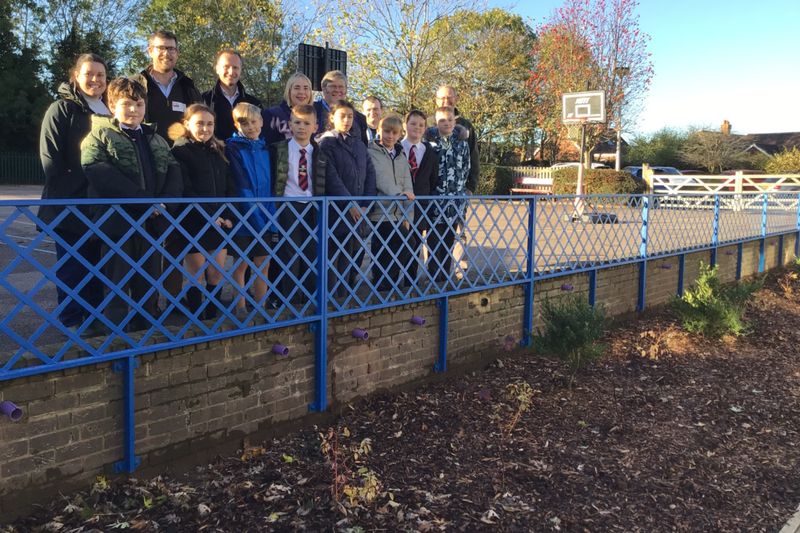Two rain gardens have been created adjacent to the car park and playground at St Katherine’s School in Snodland and are designed to take run-off from the hard surface areas capturing the water, then infiltrating some into the ground and slowly releasing the rest into the drainage network.

Back row – KCC Partnerships and Programme Officer, Louise Smith; KCC Flood Risk Manager Max Tant; KCC Director of Environment and Waste, Matt Smyth; KCC Cabinet Member for Environment, Susan Carey; KCC Deputy Cabinet Member for Environment Tony Hills; KCC Flood Risk Project Officers Daniel Hoare and Neil Clarke.
Front row – St Katherines School and Nursery School Ambassadors
The work began earlier this year after the school had to relocate to another premises from June 2019 to the end of the summer term, following damage caused by water to its classrooms, toilets, library and the hall. The site was fully reopened in September 2019.
The sustainable drainage scheme features a swale running along the rear of the school buildings and receives the run-off from the playing field, which was the main source of flooding in 2019. The swale feeds the surface water to a large basin, where it can be stored and allowed to slowly drain into the ground.

“This project has reduced flood risk to the school and done so in a way that brings many other benefits. The trees, wildflowers and other vegetation don’t just soak up the water but clean the air, provide habitat for nature, delight the eye and help teach us all about the benefits of nature”
KCC's Cabinet Member for Environment, Susan Carey said:
"This project has reduced flood risk to the school and done so in a way that brings many other benefits. The trees, wildflowers and other vegetation don’t just soak up the water but clean the air, provide habitat for nature, delight the eye and help teach us all about the benefits of nature."
"This is the first sustainable drainage scheme we have delivered for a school and has been part funded by the Department for Education (DfE) decarbonisation programme. We hope it is the first of many such projects."
ENDS.




